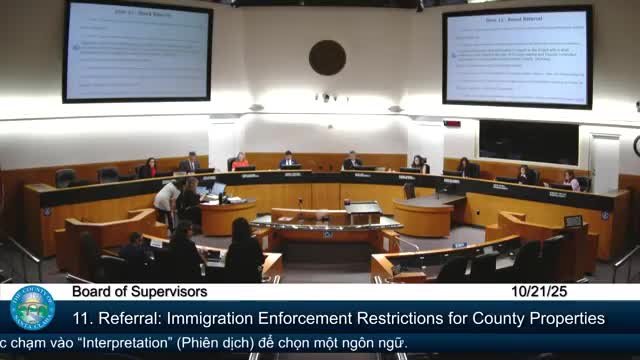Report on Proposed Minimum Wage Increase on the Isle of Man and its Alignment with Sustainable Development Goals
Executive Summary
A proposal to increase the minimum wage on the Isle of Man by 9.9%, from £12.25 to £13.46 per hour, is set for consideration by Tynwald. This report analyses the proposal through the framework of the United Nations Sustainable Development Goals (SDGs), examining the perspectives of workers, employers, and the Minimum Wage Committee. The core tension lies between advancing goals related to poverty reduction and decent work (SDG 1, SDG 8, SDG 10) and ensuring sustainable economic growth and business viability (SDG 8).
Analysis in the Context of Sustainable Development Goals (SDGs)
SDG 8: Decent Work and Economic Growth
The proposed wage increase directly addresses the “Decent Work” aspect of SDG 8 by aiming to provide a fairer wage that reflects the rising cost of living.
- For Employees: The increase is seen as a crucial step towards achieving a decent standard of living, enabling workers to cover essential utilities and daily expenses. This aligns with Target 8.5, which promotes full and productive employment and decent work for all.
- For Employers: Business owners and the Chamber of Commerce warn that the significant increase poses a risk to sustainable economic growth. They cite potential business closures, job losses, and reduced working hours, which would undermine the objectives of SDG 8. The Minimum Wage Committee specifically noted a risk of fewer hours for disabled workers, conflicting with the goal of inclusive employment.
SDG 1: No Poverty & SDG 10: Reduced Inequalities
The policy is fundamentally linked to alleviating poverty and reducing economic disparities on the island.
- Poverty Alleviation: Workers state that “everything is getting expensive and out of reach.” A higher minimum wage is intended to increase the purchasing power of the lowest-paid employees, helping to prevent in-work poverty.
- Reducing Inequality: The calculation for the new wage is based on 66% of the island’s median earnings. This formulaic approach is a direct policy tool aimed at narrowing the income gap between the lowest earners and the general population, a key objective of SDG 10.
SDG 11: Sustainable Cities and Communities
The debate highlights the connection between wages and the broader cost of living, a central component of sustainable communities.
- Affordability Crisis: Employee testimony links the necessity of a “proper minimum wage” to the ability to afford mortgages and contend with the high cost of housing and bills on the island.
- Systemic Concerns: Workers expressed concern that without systemic controls on the housing market and general inflation, a wage increase alone would be a “little treat” rather than a sustainable solution, as rising costs would quickly negate any financial gains.
Stakeholder Perspectives
Employee Viewpoint
- Support for Increase: Workers welcome the proposed rise as necessary to cope with the escalating cost of living, particularly for utilities and daily necessities.
- Concerns over Inflation: There is significant worry that the wage increase will be passed on to consumers through higher prices and that it will be accompanied by a continued rise in housing and living costs, thereby cancelling out any real-term benefit.
Employer and Business Community Viewpoint
- Unsustainable Costs: Small business owners described the 9.9% hike as “stupidly high” and warned that they lack the capacity to absorb such a sudden increase in overheads.
- Risk to Jobs: The Isle of Man Chamber of Commerce and local employers have stated the proposal creates a “serious risk of more business closures and job losses.”
- Flawed Methodology: Employers criticised the calculation’s basis on median earnings, arguing it is skewed by higher public sector salaries and creates an inflationary cycle where the median and minimum wage perpetually drive each other up.
Minimum Wage Committee Assessment
- Lack of Endorsement: The committee did not back the proposed increase, deeming it “unsustainable for a cross section of low paying employers.”
- Negative Economic Impact: The committee warned the hike was likely to have a negative effect on inflation and could lead to a reduction in available hours for staff.
- Policy Direction: The committee expressed support for decoupling the minimum wage from the living wage, suggesting a need for further refinement of the policy to better support businesses and protect jobs.
1. Which SDGs are addressed or connected to the issues highlighted in the article?
-
SDG 1: No Poverty
The article discusses the struggle of workers to afford basic necessities due to rising costs. The proposed minimum wage increase is a direct measure to combat poverty by ensuring wages are sufficient to cover living expenses. As one worker states, the increase would “help us with our utilities because prices are getting high” and address the fact that “everything is getting expensive and out of reach.”
-
SDG 8: Decent Work and Economic Growth
The core of the article is the debate between providing decent wages for workers and ensuring the economic viability of businesses. It highlights the tension between promoting “decent work” through a higher minimum wage and the potential negative impacts on economic growth, such as “business closures and job losses,” as warned by the Chamber of Commerce.
-
SDG 10: Reduced Inequalities
The article touches on income inequality by discussing the gap between the minimum wage and the cost of living, particularly housing. It also raises concerns about how the wage increase could disproportionately affect certain groups, noting it could lead to “fewer hours being available to staff, especially to disabled workers,” which relates to the economic inclusion of vulnerable populations.
-
SDG 11: Sustainable Cities and Communities
The issue of housing affordability is explicitly linked to the minimum wage. A worker points out that to “allow people to afford a mortgage you need a proper minimum wage.” This connects the economic discussion to the broader goal of ensuring residents can afford to live sustainably within their community.
2. What specific targets under those SDGs can be identified based on the article’s content?
SDG 1: No Poverty
- Target 1.2: By 2030, reduce at least by half the proportion of men, women and children of all ages living in poverty in all its dimensions according to national definitions. The entire debate around raising the minimum wage to a level that covers the high cost of living is aimed at preventing in-work poverty.
SDG 8: Decent Work and Economic Growth
- Target 8.5: By 2030, achieve full and productive employment and decent work for all women and men, including for young people and persons with disabilities, and equal pay for work of equal value. The proposed wage increase is a move towards “decent work.” However, the concern that it could lead to “fewer hours being available to staff, especially to disabled workers” directly relates to the goal of achieving employment for persons with disabilities.
- Target 8.2: Achieve higher levels of economic productivity through diversification, technological upgrading and innovation, including through a focus on high-value added and labour-intensive sectors. The fear that the wage hike is “unsustainable for a cross section of low paying employers” and could lead to “business closures” speaks to the challenge of maintaining economic productivity and the health of small businesses.
SDG 10: Reduced Inequalities
- Target 10.2: By 2030, empower and promote the social, economic and political inclusion of all, irrespective of age, sex, disability, race, ethnicity, origin, religion or economic or other status. The specific mention by the Minimum Wage Committee that the increase could negatively impact the hours available to “disabled workers” highlights the importance of ensuring that economic policies do not inadvertently exclude vulnerable groups.
SDG 11: Sustainable Cities and Communities
- Target 11.1: By 2030, ensure access for all to adequate, safe and affordable housing and basic services. The article directly connects wages to housing affordability, with a worker stating that a “proper minimum wage” is necessary for people to “afford a mortgage,” linking income directly to access to adequate housing.
3. Are there any indicators mentioned or implied in the article that can be used to measure progress towards the identified targets?
Indicators for SDG 1 & 8
- Minimum wage level: The article explicitly states the current minimum wage (£12.25 per hour) and the proposed new wage (£13.46 per hour). This is a direct quantitative indicator of wage policy.
- Ratio of minimum wage to median earnings: The article mentions that the proposed 9.9% rise is “based on 66% of the median earnings recorded in the Isle of Man Earnings Survey Report 2025.” This ratio is a key indicator of wage equity.
Indicators for SDG 8 & 10
- Business closure and job loss rates: The warning from the Chamber of Commerce about “a serious risk of more business closures and job losses” implies that these rates are key metrics for assessing the economic impact of the wage policy.
- Employment hours for specific groups: The concern about “fewer hours being available to staff, especially to disabled workers” suggests that the average hours worked by persons with disabilities is an important indicator for measuring social and economic inclusion.
Indicators for SDG 1 & 11
- Cost of living and inflation rate: The article is replete with references to the rising cost of living (“everything is getting expensive,” “prices are getting high,” “housing market, the living costs, the bills”). The inflation rate is mentioned as a concern, with the committee noting the wage hike could “have a negative effect upon inflation.”
- Housing affordability: The mention of “property prices” and the ability to “afford a mortgage” implies that the ratio of house prices to average income is a relevant indicator for measuring whether wages are adequate for securing housing.
4. Table of SDGs, Targets, and Indicators
| SDGs | Targets | Indicators |
|---|---|---|
| SDG 1: No Poverty | Target 1.2: Reduce poverty in all its dimensions according to national definitions. |
|
| SDG 8: Decent Work and Economic Growth | Target 8.5: Achieve full and productive employment and decent work for all, including persons with disabilities. |
|
| Target 8.2: Achieve higher levels of economic productivity. |
|
|
| SDG 10: Reduced Inequalities | Target 10.2: Empower and promote the social and economic inclusion of all, including persons with disabilities. |
|
| SDG 11: Sustainable Cities and Communities | Target 11.1: Ensure access for all to adequate and affordable housing. |
|
Source: bbc.com







